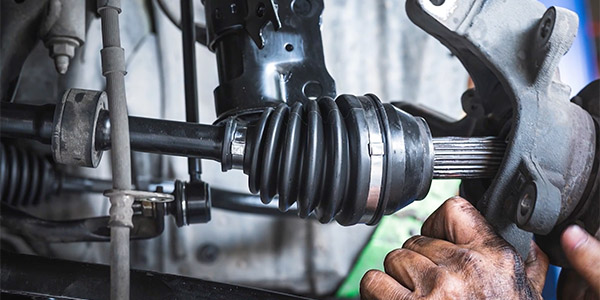The average age of the vehicles on the roads today is over 12 years old – this is testament to the quality construction built into cars and trucks. But because they last so long, many of your customers often become desensitized to components that need to be replaced.
Shocks and struts are vital safety components that help keep a car steady – and if the car isn’t steady, this can cause a serious issue or accident that can endanger the driver, their passengers or the other people on the road with them.
It’s important that you probe the vehicle owner about their vehicle’s handling to determine if they have an awareness that the ride control is not as it was when it was new.
They may not realize that their shocks and struts need replacing. Over 50,000 miles, the dampening capabilities of a shock or strut will degrade to the point where it can impact ride and handling, but the driver doesn’t notice because it happens gradually.
Generally speaking; shocks and struts of a well-maintained car can last for 10 years. But that’s for ideal conditions – most experts say say that 7-8 years is the maximum life of most shocks and struts. However, if clients are driving frequently on poor road conditions, they may have to replace their car’s struts in 5 years.
Under normal conditions on a smooth road, the shocks and struts can stroke (rebound and compress) an average of 1,750 times for every mile traveled. This can add up to almost 9 million cycles in 50,000 miles. Yes, 9 Million times, which has real impact on the vehicle’s braking ability.
Shocks and struts that have lost HALF of their effectiveness reduce braking efficiency and increase the braking distance. According to research, worn shocks can result in a 15% to 20% increase in braking distances. Ask your client if he or she has noticed that it is taking longer to come to a stop in the same conditions, at the same speed, as before. If so, it may not just be a brake pad issue – it could be time to change the shocks for their safety and that of other road users.
Always conduct a thorough inspection – poor inspections are a major cause why ride control doesn’t get sold. Performing a visual inspection for any leaks or broken parts and inspecting the tires should be top on the list.
Next, it’s important that you get a feel for how the vehicle handles so you can easily identify if they have noticed any changes in the handling–changes that could indicate a problem. Taking a test under a wide range of driving conditions will help you get a feel for any noises or performance issues related to the shocks, struts, and control arm assemblies.
Your customer may think shocks and struts only relate to ride comfort and may ask if they can wait to replace their struts. Remind them that stopping distance will be compromised, the tires will wear faster and other suspension parts will continue to wear out sooner.”
Surveys have shown that 50% of ride control sales occur on the second visit. This means that a large percentage of first-time sales pitches for ride control are followed by, “Sorry, no thank you.” But the customer eventually comes back.
With your informed recommendation, you can save them the second trip. Have the job done right the first time.
For more information, visit FCSAutoparts.com.
This video is presented by The Group Training Academy.













